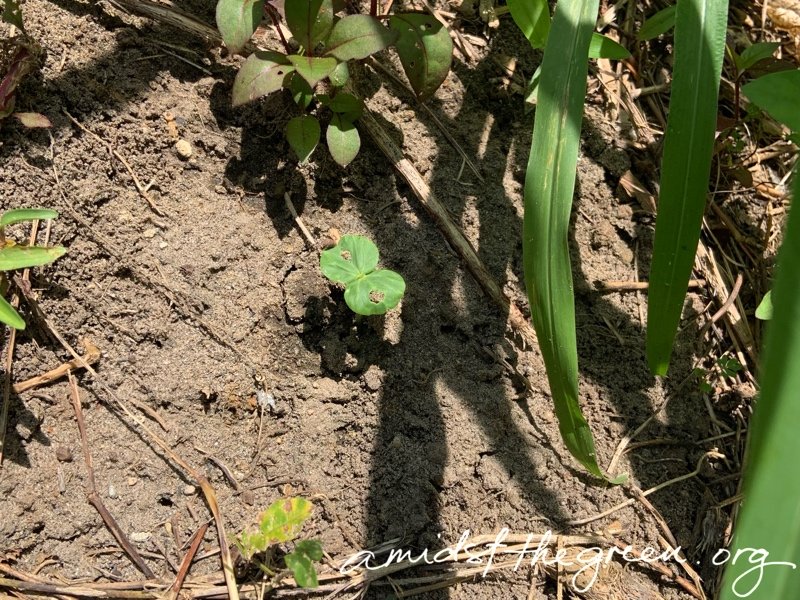Took a stroll through the forest, and it is quite hot and sunny today. I welcome it, as we’ve been having rainy days, and a good amount of sun is always good.
Very happy to see that two of the Roselle (Hibiscus sabdariffa) seeds I sowed last Tuesday have germinated and sprouted already.
This one above looks peacefully happy amongst some wild Dayflowers (Commelina sp), while the other one below looks a bit hot and perhaps has been discovered by someone hungry:
Hoping both of them survive and grow well. So far, we have three promising Roselle seedlings that are about the same size as this one:
Roselle seedlings take about six months to mature and flower, so it does take a while. All worth it though. Roselle was one of the first plants we grew in the first year of the food forest, and our harvest of Roselle calyces back then was turned into jars and jars of jam.
How Roselle flowers turn into the calyces. November 2020.
Our first Roselle patch. November 2020.
So I’m hoping that by early next year, we’ll be making jars and jars of Roselle tea this time around.
Thought I’d share some not so lush growth in the food forest in this update, too.
This is a Makrut Lime (Citrus hystrix) growing under the Bani (Milletia pinata). He definitely does not look very happy; it looks like there are some leaf miners feasting on the leaves.
Since I’ve mentioned the Roselle from almost five years ago, I’d also like to mention that this kind of unhappiness displayed by any plant in the food forest years ago would make me research to the ends of the earth on how to “fix” it. Now though, I just take note of it, and trust that one of two things will happen:
That the plant will succumb to what is making it unhealthy. A sign to me that the plant was not supposed to be where it was in the first place. Perhaps too much shade from the Bani, or
That the plant and the entire ecosystem will come together and take care of it.
In many, if not all, instances of “plant sickness” or “pest infestation” in the food forest, nature does take care of it, and usually, the plant bounces back, even more lush and healthier than before. This has happened to the Star Apple (Chrysophyllum cainito), Salingbobog (Crateva religiosa), and the Avocado (Persea americana) in our Food Forest in a Pot before. The Star Apple had sooty mold, the Salingbobog had so many Aphids farmed by Weaver Ants, and the Avocado had Mealybugs. In all cases, I did nothing. And all three trees are thriving and happy now, with the Star Apple actually having her first flower buds this year.
Of course, everything when it comes to the land is a case to case basis, but I do find that trusting nature and letting her sort things out, while it may take some time, gives the best results. So… I will wait and see what happens to the Makrut Lime.
Lastly, I took some time to admire the Ternate (Clitoria ternatea) flowers on the Izumi Trellis.
Well, the day is still young, and there may be another update later tonight (on the website and hub, not sending another newsletter). Have a great weekend, all.







